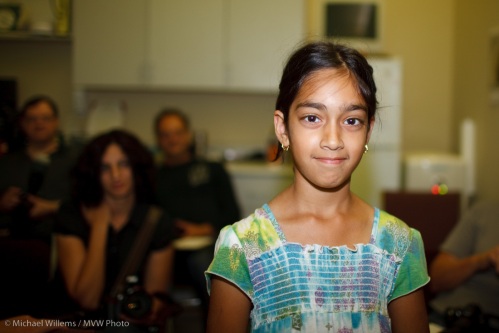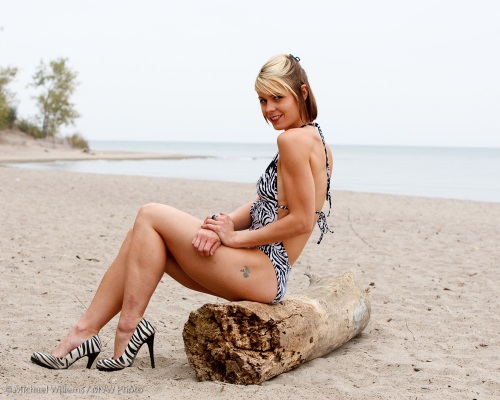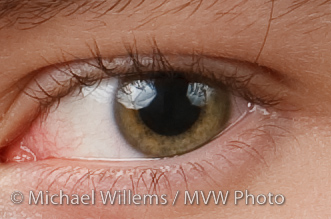Here’s an impromptu portrait I took on Tuesday, of a lovely student who kindly volunteered to be the subject, in the Flash for Pros course:

And here’s how I did this:
- Camera: The camera was a Canon 7D
- Lens: I used a 50mm f/1.4 lens. (50mm on a crop camera, even the very cheap f/1.8 version, makes a great portrait lens).
- Settings: The settings were Manual mode at 1/30th second, f/5.6, 400 ISO
- Flashes: I used two 430 EX flashes on light stands, fired from the pop-up flash (like most Nikon cameras, the 7D allows this). Other than that, the pop-up flash was disabled. (I could also have used a 580EX on the camera as master.)
And how I used those flashes:
- I used e-TTL, so I did not have to meter and set the flashes manually.
- The main flash (“A”) was on camera left: a 430EX fired into a Honl gold/silver (half CTO) reflector. It was about a foot away from her.
- The second flash was also a 430EX; this one fired straight at her from 45 degrees behind, through a Honl 1/4″ grid. This flash was also about a foot away from her.
- I set an A:B Ratio of 4:1, so the main light was two stops brighter than the hair light.
Another student that night wrote a blog post, here, where you can see a few pics with some of the modifiers I used.
So it’s actually quite simple: now you go try. It is amazing what you can do in just a few seconds with just a couple of flashes (speedlites) and some small, light, convenient modifiers.













